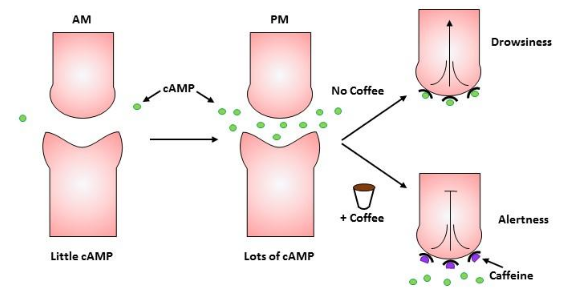 I don’t know about you but the first thing I do after arriving at work in the morning is grab a cup of coffee. Like many say ‘I can’t function without it’. In the UK alone over 50 million cups are consumed in just one day! So what exactly is it about coffee that makes us crave it so much?
I don’t know about you but the first thing I do after arriving at work in the morning is grab a cup of coffee. Like many say ‘I can’t function without it’. In the UK alone over 50 million cups are consumed in just one day! So what exactly is it about coffee that makes us crave it so much?
Although originally native to the tropics, the coffea plant is now grown in over 70 countries around the world, producing two main types of coffee, Coffea Canephora (also known as Robusta) and Coffea Arabica. Harvested coffea fruit (also known as cherries) are dried to reveal the beans which are then hulled and polished. Beans are then roasted, releasing the caffeol oil (which is stored within the bean and gives them their distinct brown colour and aroma). Among other chemicals found in these beans is caffeine, the chemical responsible for the stimulatory effect of coffee. Caffeine is absorbed into the body through the small intestine, where it is then able to cross the blood-brain barrier and produce the psychoactive effects associated with coffee consumption.
Chemically speaking caffeine is what is known as a purine. It stimulates the central nervous system (CNS) by blocking the action of adenosine (a molecule involved in cellular communication through the second messenger cAMP). cAMP acts on the CNS promoting drowsiness and preventing arousal, basically making us tired. In the morning when we wake up, levels of cAMP in the body are relatively low. As the day progresses cAMP builds up and binds to adenosine receptors found in the CNS. cAMP then acts as a messenger triggering downstream effects which make us drowsy. Caffeine prevents drowsiness by acting as an antagonist of cAMP, temporarily blocking it from communicating its downstream message. This blockage also promotes the release of other chemicals such as acetylcholine which can stimulate the body. This stimulation leads to increased alertness and focus, aiding in concentration and performance.

However, like with most foods, we’re constantly hearing about the associated diseases and medical problems coffee could cause; cancer, heart disease and long term addiction to name a few. But, how much of this is true? Well actually very little. Like many of our guilty pleasures, caffeine in moderate amounts has no negative effects on healthy adults. In fact you would need to consume a whopping 15-20 cups of coffee per day to overdose (I think most people would struggle with that)! In terms of caffeine addiction, it is possible to experience mild psychoactive withdrawal if consumption is stopped, but this affect is mild compared to the withdrawal experienced when coming off other psychoactive drugs.So, whilst you should definitely not substitute coffee for water, our favorite fuel is still a safe morning essential – go procaffinate!
Post by: Stephanie Macdonald
Useful links:
http://www.webmd.boots.com/healthy-eating/guide/caffeine-myths-and-facts
https://en.wikipedia.org/wiki/Caffeine
http://www.ncausa.org/About-Coffee/What-is-Coffee
Save
Save
